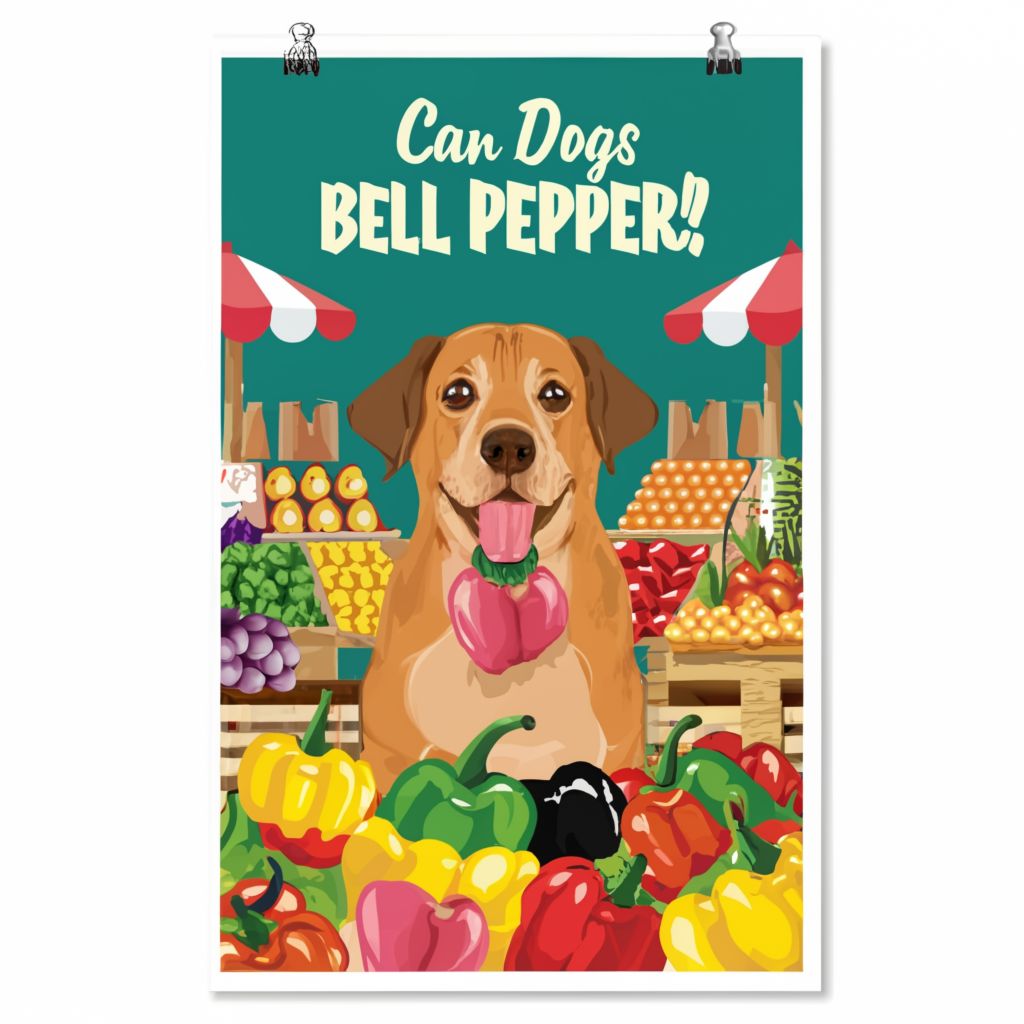Can Dogs Eat Bell Peppers? How to Feed Dogs Peppers

Can Dogs Eat Bell Peppers? How to Feed Dogs Peppers
A lot of people use pepper as a vibrant and crispy ingredient in their salads, stir-fries, and other dishes. But can dogs eat peppers too? The answer might surprise you! Just like us, dogs can safely enjoy certain fruits and vegetables as a side dish. of their cooking diet. and bell peppers are one of them. Bright vegetables are a great source of vitamins and nutrients that can benefit your pet’s health. We should ask your dog whether bell peppers are safe and healthy to eat.
Are bell peppers safe for dogs to eat?
Peppers come in different colors like red, green, and yellow like pearls in a treasure chest. Do dogs have the potential to be healthy if they are fed with paprika? The good news is that yes, paprika is generally safe for dogs in moderate amounts. These colorful vegetables are low in calories and rich in essential vitamins and nutrients, making them a healthy addition to your dog’s diet. Like all new foods, it is important to gradually introduce paprika and keep an eye out for potential adverse effects on your dog. Examining the safety and deliciousness of peppers for your dog is necessary to understand.
Can dogs have bell peppers as a snack?
Dogs can enjoy eating bell peppers as a tasty treat due to their high nutritional value, vitamins, and minerals, all of which are beneficial for their health. These are crunchy and tasty snacks that many dogs like. However, it is important to prepare peppers before giving them to your dog. Remove the seeds and membranes, as these parts can be difficult for dogs to digest and can cause gastrointestinal upset. Moreover, it is important to gradually introduce new foods to your dog for their proper intake. Be mindful of serving sizes and watch out for side effects when taking care of your dog, just like with treats. Overall, peppers can be a tasty and nutritious snack for your canine companion when given in moderation.
Can dogs eat raw bell peppers, or do they need to be cooked?
Dogs can eat raw peppers! Raw peppers are safe and nutritious for dogs and provide them with essential vitamins and minerals.Your pet will find these crunchy vegetables to be a delightful and nutritious treat.Before introducing raw paprika to your dog, it is crucial that you prepare it thoroughly. Be sure to wash the peppers thoroughly to remove any dirt or pesticides.Additionally, remove seeds and membranes as they can be challenging for dogs to digest and may result in digestive issues. Overall, raw peppers can be a tasty and healthy addition to your dog’s diet if served in moderation.
Are certain colors of bell peppers safer for dogs to eat?
All bell colors – red, green, yellow, or orange – are safe for dogs. Each color variety offers a slightly different nutritional value, but they are all nutritious and generally safe for dogs. For example, red peppers are usually the ripest and contain more of certain vitamins and antioxidants. In addition to being nutritious, green peppers are also safe for dogs to consume. The most important thing is to prepare the peppers correctly, removing the seeds and skins, as these parts can be difficult for dogs to digest. All in all, you can give your dog any kind of pepper as a tasty and nutritious snack.
Can dogs have bell pepper seeds or membranes?
It is not recommended to give dogs peppercorns or bark. While paprika itself is safe and nutritious for dogs, the seeds and membranes can be difficult for dogs to digest and can cause gastrointestinal upset. Smaller dogs or individuals who swallow food without fully chewing on it may experience choking hazards from these parts of the pepper. It is important to remove the seeds and membranes before serving the peppers to your furry friend to ensure your dog’s safety and avoid digestive upset. Feed your dog the fleshy part of pepper in moderation for a healthy and enjoyable snack.

How much bell pepper can I give my dog?
A healthy diet for humans and dogs requires moderate consumption. Managing your dog’s intake means giving them less than the recommended amount of food. While paprika is typically harmless to dogs and provides essential vitamins A and C, excessive intake can cause discomfort or indigestion. To begin, you can introduce paprika in small quantities as a treat or as part of your dog’s diet. Pay attention to your dog’s behavior and ensure he consumes paprika in ample quantity before increasing his intake. Be sure to remove the seeds and membranes, as these parts can be difficult for dogs to digest. Moderate the consumption of peppers to ensure your dog gets a nutritious and tasty treat without getting sick.
Are there any health benefits to feeding bell peppers to dogs?
Yes, there are several health benefits of feeding peppers to dogs.Bells are a valuable source of vitamins and other nutrients that can benefit your furry friend. Some of the main benefits are:
- The vitamin C found in bell peppers is essential for boosting immunity and maintaining good health.Consuming vitamin C-rich foods can aid your dog in fighting off infections and maintaining good health.
- The peppers are rich in antioxidants like beta-carotene and lutein, which help to shield cells from damage caused by free radicals.By providing antioxidants, you can reduce the likelihood of developing chronic illness and prolong your life in dogs.
- Hydrate: Paprika contains a lot of water to help hydrate your dog, especially in hot weather or after exercise. Proper hydration is essential to maintain healthy bodily functions and support overall well-being.
- The good fibers in peppers are beneficial for digestion and bowel control. Adding paprika to your dog’s diet can promote digestion and prevent constipation.
- A healthy choice for dogs that need to maintain or shed weight is low in calories and fat, making Paprika a good choice. They can be a satisfying and nutritious snack without adding extra calories.

What are the risks of giving bell peppers to dogs?
Despite being safe for dogs to consume, bell peppers can pose risks, particularly if they are not properly served and prepared. Here are some possible risks associated with giving paprika to dogs:
- Moderate amounts of fiber in bell peppers can aid in digestion. However, eating too much pepper or adding it too quickly to a dog’s diet can cause digestive problems such as diarrhea, gas, or vomiting.
- The seeds and membranes inside chili peppers can be choking-inducing. small dogs or those who tend to swallow food without chewing it. properly. Always remove the seeds and skins before serving peppers to your dog to avoid choking or chewing the peppers.
- Pesticide residues: Peppers are on the “Dirty Dozen” list with the highest levels of pesticide residues. While washing peppers thoroughly can help reduce pesticide exposure, it’s important to choose organic peppers whenever possible to minimize your dog’s risk of ingesting the pesticide.
- Allergies: Although rare, dogs can be allergic to peppers or certain compounds found in them. Watch for signs of allergic reactions such as itching, hives, swelling, or difficulty breathing when you first give your dog peppers.
- Sodium: Although peppers themselves are low in sodium, be careful when feeding your dog seasoned or processed peppers. , such as stuffed peppers or pepper-based sauces, as they can be high in sodium, which can be harmful to dogs, especially those with certain medical conditions, such as heart disease or hypertension.
Paprika can be included in your dog’s diet as part of an overall balanced diet to minimize these risks. Get rid of the seeds and membranes, wash off the peppers completely, and reheat or steam them before serving to your pet. As always, talk to your vet before adding new foods to your dog’s diet, especially if your dog has health issues or dietary restrictions.
